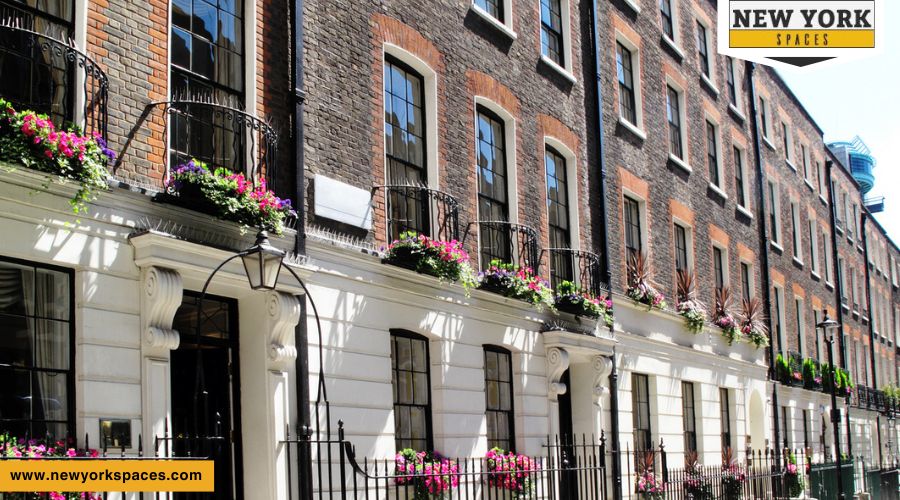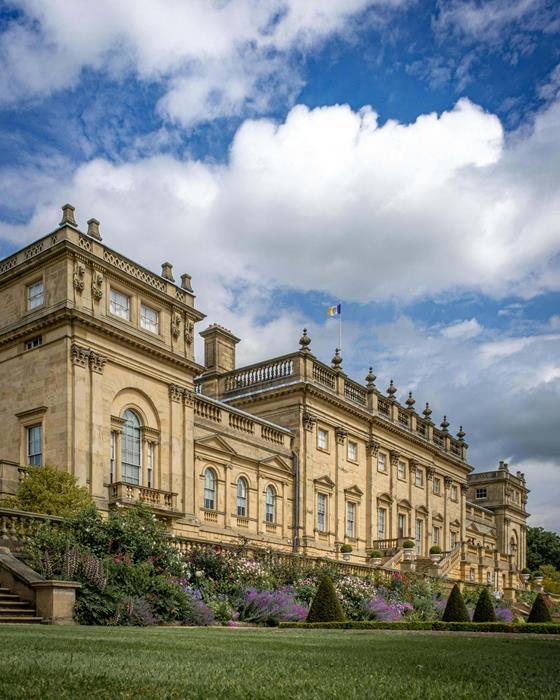Hey there, architecture enthusiasts and curious minds alike! Have you ever strolled down a street, gazed at the buildings lining either side and wondered why some scream elegance and others whisper tales of a bygone era? Well, chances are, you’ve been admiring the distinct charms of Georgian and Victorian architecture without even realizing it! Today, let’s embark on a journey to unravel the mysteries of these two architectural styles, discover their unique features, and discover what sets them apart. So, grab your virtual walking shoes, and let’s dive into the world of bricks, beauty, and history!
The Georgian Grace (1714-1830)
The Georgian era, spanning over a century from 1714 to 1830, marked a significant period in architectural history, named in honor of the four successive Kings George of Britain. This era is celebrated for its architectural elegance, akin to the timeless fashion staples like the classic suit or the little black dress. Georgian architecture’s appeal lies in its simplicity, harmony, and the restrained elegance that characterizes its buildings, making them enduringly attractive through the ages.
Symmetry and Proportion
At the heart of Georgian architecture is the principle of symmetry and proportion, reflecting the period’s admiration for the balance and harmony found in ancient Greek and Roman architecture. This classical influence is evident in the grand facades of Georgian buildings, where every element, from windows to doors, is meticulously arranged to mirror each other, creating a visually satisfying uniformity. This adherence to symmetry is not just about aesthetics; it embodies the Georgian era’s philosophical leanings towards rationalism and order, making these buildings manifest the Enlightenment ideals of balance and reason.
Sash Windows
One of the most iconic features of Georgian architecture is the sash window, a design innovation that serves a practical purpose and adds to the buildings’ aesthetic appeal. These tall, narrow windows, often divided into six or eight panes, are designed to slide vertically, allowing for effective ventilation and abundant natural light. The design of sash windows is a testament to the Georgian era’s ingenuity, optimizing function and form. These windows are typically arranged in symmetrical patterns across the façade, contributing to Georgian architecture’s sense of order and elegance.
Materials
The choice of materials in Georgian architecture further underscores its elegance and sophistication. Red brick, often highlighted with white stone trim around windows and doors, is the hallmark of this architectural style. The use of brick provided a durable and fire-resistant building material and a rich, warm hue that became synonymous with Georgian buildings. In more affluent areas, architects and builders elevated this sense of elegance by employing stone for entire facades and as decorative elements. This use of stone, whether in grand public buildings or luxurious private residences, exuded an air of sophistication and permanence, reflecting the social aspirations of the Georgian period.
In areas of wealth and prestige, entire facades could be clad in stone, showcasing the era’s ability to marry practical needs with aesthetic desires. Bathstone, a warm, honey-colored limestone, became particularly popular, especially in constructing landmark buildings and upscale townhouses. This material enhanced the structures’ visual appeal and signified their occupants’ status and wealth.
The Victorian Variety (1837-1901)
Next, we transition into the Victorian era, from 1837 to 1901, named after Queen Victoria, whose long reign was marked by profound changes in society, technology, and the built environment. This period is characterized by an explosion of creativity and diversity in architectural styles, moving away from the Georgian era’s classical restraint toward celebrating ornamental excess and variety. Victorian architecture is akin to the flamboyant cousin of the Georgian style, lavishly adorned and embracing the full spectrum of technological and artistic innovations of the time.
Eclecticism
The hallmark of Victorian architecture is its eclecticism, a reflection of an era of innovation, exploration, and the breaking of architectural conventions. Unlike the uniformity of Georgian architecture, the Victorian period was a tapestry of styles, each with distinct characteristics and influences. Gothic Revival, Italianate, and Queen Anne styles stood side by side, offering a visual feast of architectural diversity. This eclecticism was driven by a desire to express individuality, national pride, and the burgeoning wealth of the industrial age, leading to buildings that were as varied as they were imaginative.
- Gothic Revival was a nod to the medieval past, with its pointed arches, ribbed vaults, and flying buttresses, evoking the grandeur of Europe’s great cathedrals and emphasizing verticality and light.
- Italianate style borrowed from the rustic villas of Renaissance Italy, featuring low-pitched or flat roofs, tall windows, and towers or cupolas, embodying a more leisurely and luxurious lifestyle.
- Queen Anne style emphasized asymmetry and surface decoration, with elaborate roofs, bay windows, and balconies, often incorporating a mix of materials and colors for dramatic effect.
Ornamentation
Victorian buildings are immediately recognizable by their lavish ornamentation. Architects of the era employed various decorative elements to add complexity and richness to facades and interiors. Intricate brickwork, elaborate wood carvings, and terracotta tiles were commonly used to embellish surfaces, while stained glass windows introduced vibrant splashes of color to buildings, transforming light into decor. Patterned tiles adorned floors and walls, adding to the visual amenity that defined Victorian interiors. This penchant for decoration was not merely an aesthetic choice but a symbol of status, progress, and the technological prowess of the Victorian age.
Comparing the Two
Here’s a comparison table summarizing the key differences between Georgian and Victorian architectures:
| Feature | Georgian Architecture | Victorian Architecture |
| Aesthetic Philosophy | Prioritizes symmetry and proportion, reflecting admiration for the classical past. | Showcases wealth, technological progress, and an eclectic mix of historical styles. |
| Materials and Construction | Predominantly uses brick. | Incorporates a wider range of materials, including stone, iron, and steel, thanks to the Industrial Revolution. |
| Ornamentation | Relatively restrained in decoration, favoring classical elegance. | Embraces ornamentation with elaborate carvings, stained glass, and decorative tiles. |
Why Does It Matter?
Understanding the differences between Georgian and Victorian architecture offers us more than just architectural trivia. It gives us insights into their times’ social, economic, and technological shifts. These buildings are not just structures; they are storytellers, whispering tales of the people who built them, lived in them, and walked their halls.
Conclusion
Whether you’re a die-hard architecture buff or just someone who appreciates a beautiful building, the differences between Georgian and Victorian styles are fascinating. Each era’s architecture offers a window (often quite literally, in the case of those Georgian sashes) into the past, reflecting its values, aspirations, and innovations. So, next time you’re out and about, take a moment to look around and appreciate the silent stories being told by the buildings around you. Who knows? You might see your surroundings in a whole new light. Happy exploring, and until next time, keep looking up and admiring the beauty that history has built around us!



